Highlights—
|
Tired of spending countless hours manually transcribing data from PDFs? With AI-based extraction tools, you can make those same contracts, invoices, and reports editable by automatically converting them from PDF and with a 99% accuracy rate, saving you dozens of days of work a year, no matter how large your organization is.
We’ve tested 20+ tools, and here are the best tools for 2025 that offer quick, fully automated PDF-to-Excel/Word conversion – even for scanned and handwritten files.
So whether you’re dealing with financial reports, legal documents, or research papers, these AI assistants wipe out the copy-paste drudgery — and make sure your formatting stays flawless.
Here are some of the best free and paid options, along with pro tips for trolling flawless extracts each and every time.

What is an AI Data Extraction Tool?
AI Data Extraction Tools are software systems that apply AI and ML to read content in documents, such as PDFs, Invoices, Receipts, Contracts, and Forms, and then convert them from unstructured data to structured data.
In contrast to the conventional manual extraction, these tools are using OCR (optical character recognition), NLP (natural language processing), and computer vision to:
- Digitize PDF to one of the following formats: Excel, CSV, JSON, etc.
- Find and extract tables, key-value pairs, and signatures
- Categorize documents (e.g., invoices and contracts)
- Automate processes (like data entry into a database)
These include tools such as Adobe Acrobat, Rossum, or Nanonets that can reduce human error and save countless hours of work.
Is It Safe to Use AI Tools to Extract Data from PDFs?
Yes, it is safe to use AI tools for extracting data from PDF documents, especially if you use a well-known provider like Adobe Acrobat or Rossum, both of which deploy enterprise-grade encryption and adhere to GDPR/CCPA standards.
That said, free or lesser-known tools might compromise data privacy, as some of them either save or analyze your files on their servers.
Store sensitive documents in the cloud with maximum security, but only if there is no end-to-end encryption provided by the cloud solution.
Always look at the tool’s privacy policy — and look for language such as “data is deleted after processing” or “local processing only.
For super sensitive data, try offline options like Tabula out solutions or self-hosted AI models so you can take full advantage of your data.
How We Tested These AI PDF Data Extractors
We evaluated each tool using real-world PDF types:
- Text-based PDFs (reports, contracts)
- Scanned PDFs (handwritten forms, receipts)
- Tables & Spreadsheets (financial data, research papers)
- Multi-language PDFs (Spanish, Chinese, Arabic)
Testing Criteria:
- Accuracy – Correctly extracts structured & unstructured data
- Speed – Processes 100+ pages in seconds
- Export Formats – CSV, Excel, JSON, Google Sheets
- Automation – Batch processing, API integration
10 Best AI Tools for Extracting Data from PDFs
1. Adobe Acrobat Pro – Best Overall Tool

Acrobat Pro is a standard if you need to edit a PDF using AI that is applied to documents intelligently. Whether it is extracting tables from scanned documents or managing form data, it delivers unmatched digital typing accuracy to those who need reliable results.
- Best for: Businesses & professionals needing precision
- Pricing: Pro version $19.99/month (Free trial available)
Why it stands out:
It leverages powerful OCR to extract data — even from handwritten notes — and its AI is likely to recognize table structures, so it’s good for financial or legal docs. Great for teams with a high volume of forms or reports.
2. Tabula – Best Free Open-Source Tool
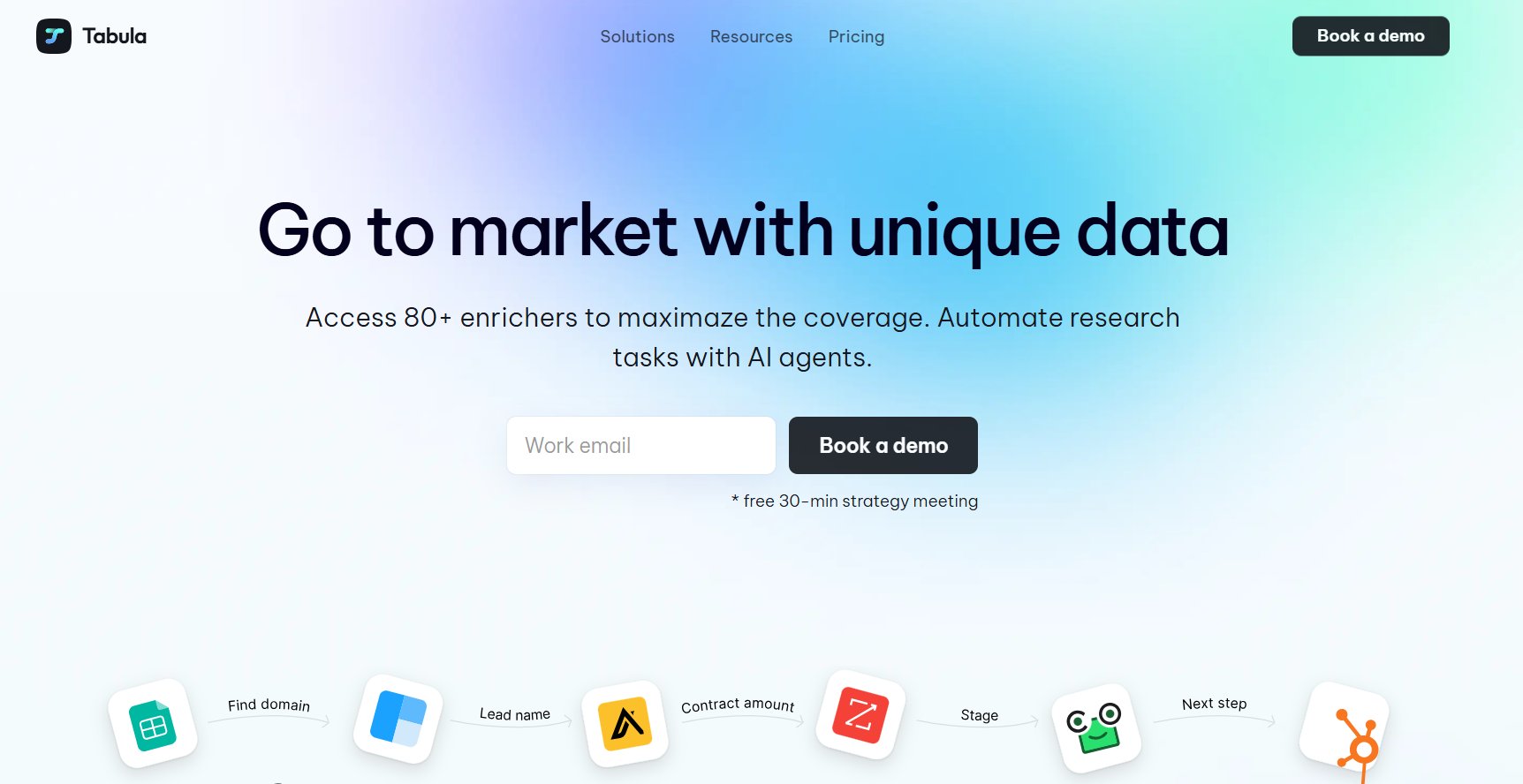
Tabula is a free, simple desktop tool for extracting data from PDFs into CSV or Excel files.
- Best for: Developers & data analysts
- Pricing: Free but paid version available
Why it stands out:
It’s easy to use, and because it works offline, this is the best option for people who care about privacy. It also doesn’t support OCR, but it’s ideal for clean digital PDFs, as well as quick data scraping projects.
3. Nanonets – Best for Automation
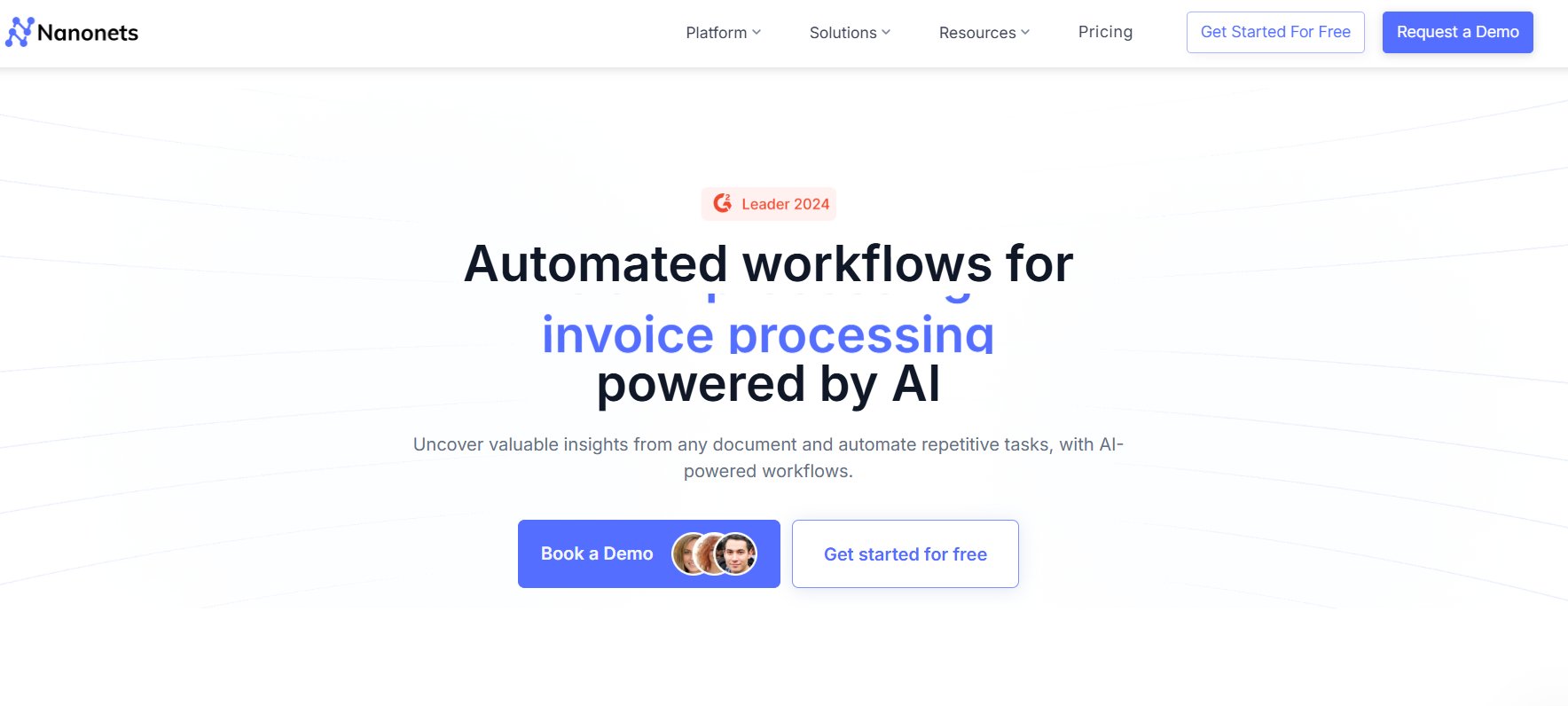
Nanonets is an OCR Platform that uses AI-powered OCR to automate the data extraction process, specifically for financial processes such as invoice and receipt processing.
- Best for: Accounts payable & invoice processing.
- Pricing: Free (500 pages/month) paid version is also available.
Why it stands out:
Nanonets gets smarter over time by learning from your corrections, so it gets better with more usage. It integrates with Zapier, Make.com, and ERPs, which makes it well-suited for businesses that are looking to automate repetitive tasks.
4. PDFelement – Best Budget Alternative
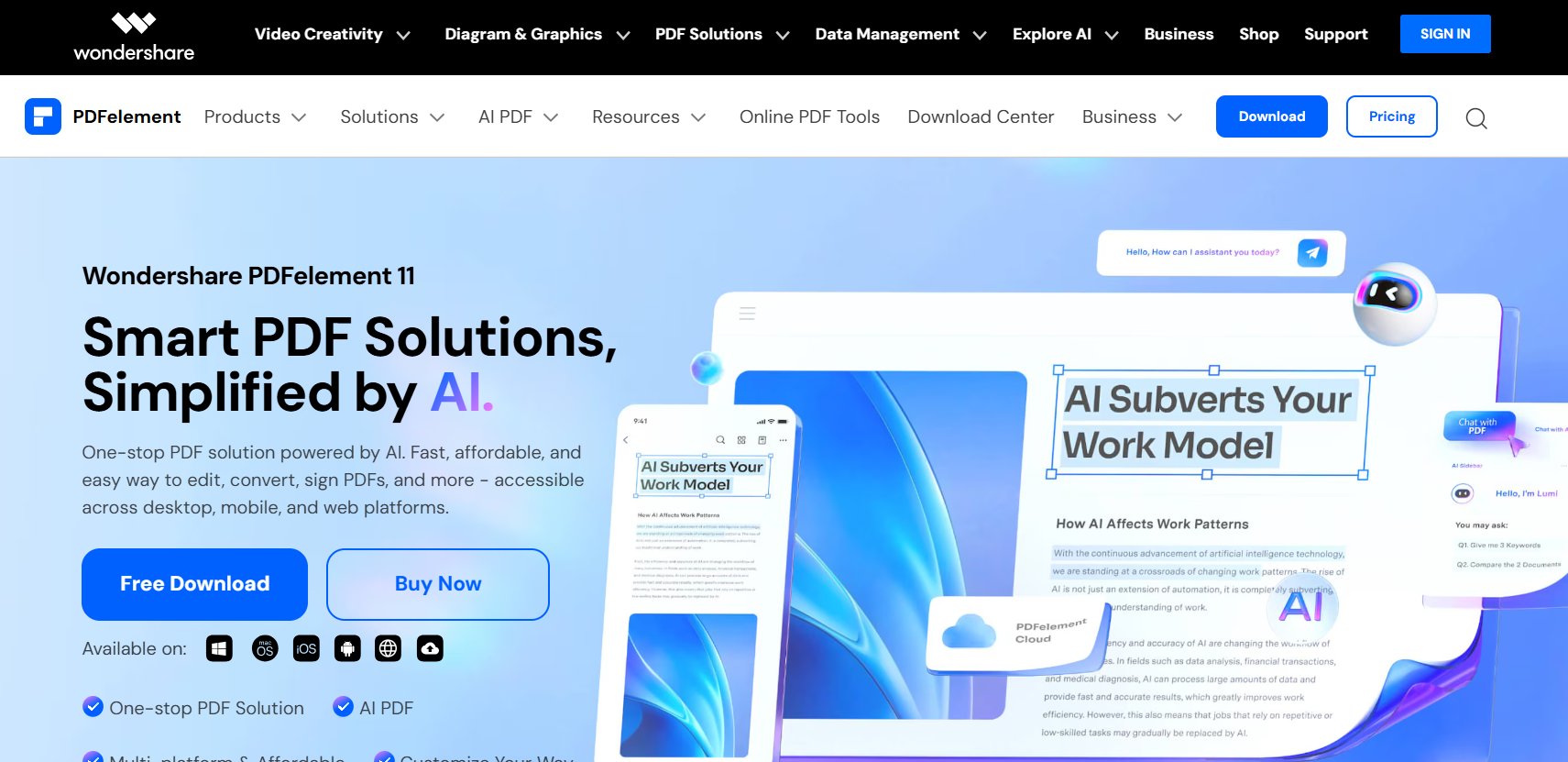
Wondershare PDFelement is a budget-friendly PDF editor with strong data extraction tools that are suitable for small and midsize businesses and solo users.
- Best for: Small businesses & freelancers
- Pricing: $11.99/year
Why it stands out:
This one-time purchase provides great value for money, as with more than 87% accuracy on complex tables and batch processing capability to process thousands of documents, you get a lot for your spending.
5. Rossum – Best for Invoices & Receipts
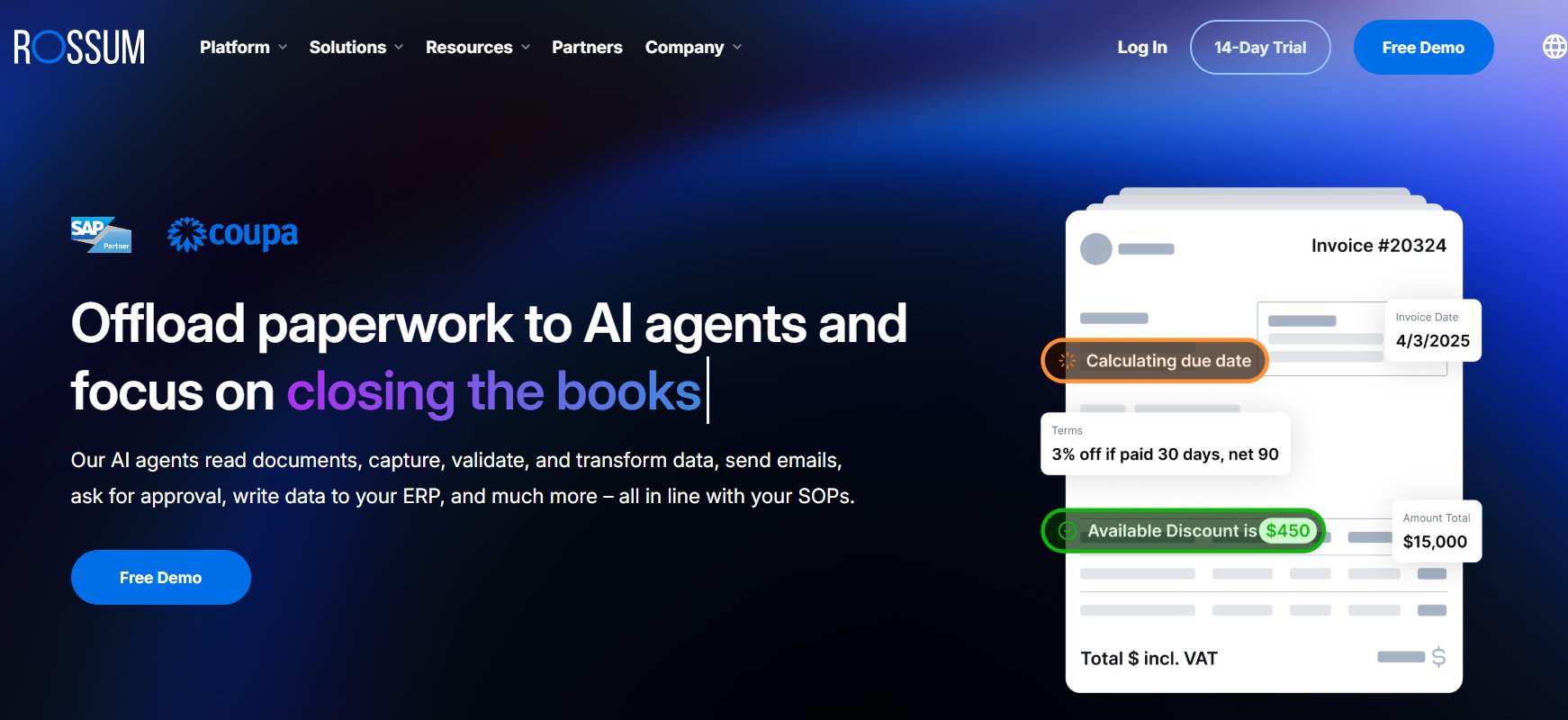
Rossum is a corporate-grade intelligent data capture solution optimized for finance departments and large accounting teams.
- Best for: Accounting teams
- Pricing: Custom (14 days free trials)
Why it stands out:
Rossum offers 99% accuracy for invoice fields, validates the extracted data with AI, and works with tools such as SAP and NetSuite. It is designed for scale but could be overkill for smaller outfits.
6. Docparser – Best for Structured Data
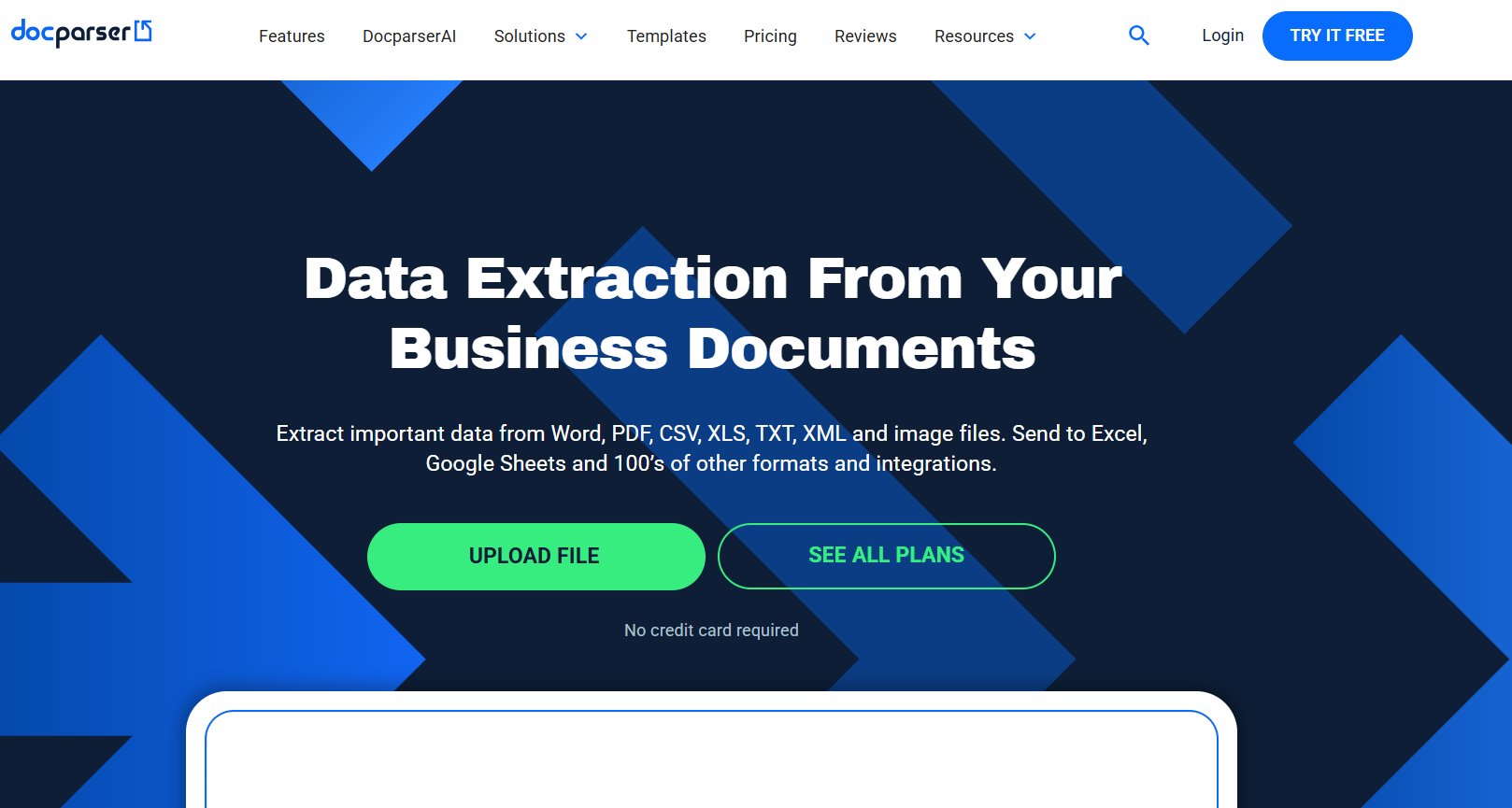
Docparser precisely extracts structured data from documents using custom templates based on rules. Perfect for extracting data from contracts, reports, and legal documents.
- Best for: Legal & real estate documents
- Pricing: $32/month (Starter plan)
Why it stands out:
With docparser, you can define custom zones to extract the exact data you need and output it exactly the way you need it to be, using a simple configuration- which can be set up within minutes and doesn’t require any programming or technical know-how. This AI Data Extraction tool is ideal for companies with recurring forms or compliance documents.
7. Parseur – Best for Emailed PDFs
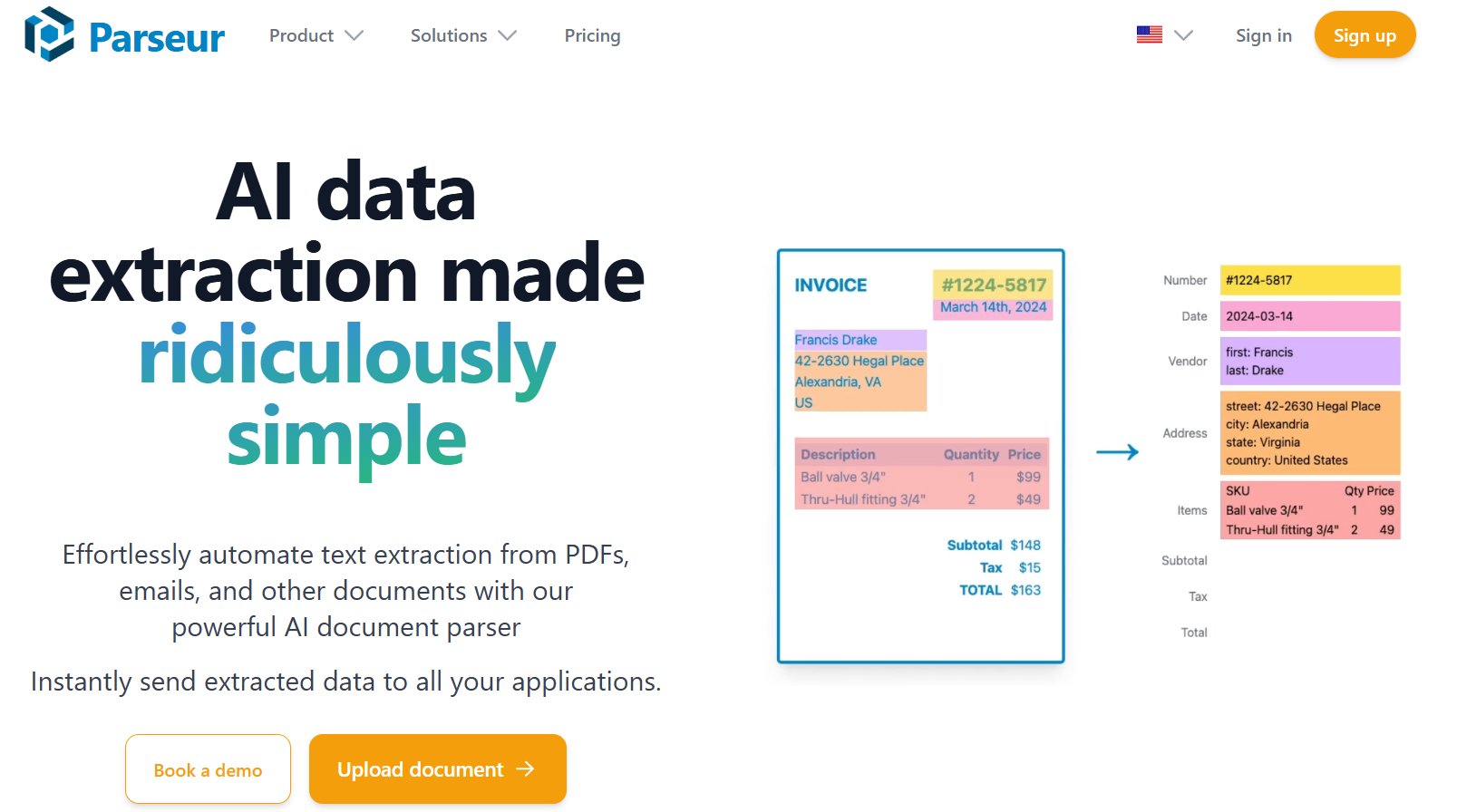
Parseur specializes in teasing out data from PDF attachments coming in via email, so it’s great for sales or logistics teams working with invoices or purchase orders, or on booking terms.
- Best for: Sales teams processing orders
- Pricing: Free for 20pages/month, $99/month (Unlimited PDFs)
Why it stands out:
It recognizes, extracts, and validates inbound emails, enforces rules you define, and will alert you to problems using Slack or Microsoft Teams. Perfect for the workflows that start in your inbox.
8. CometDocs – Best for Scanned PDFs
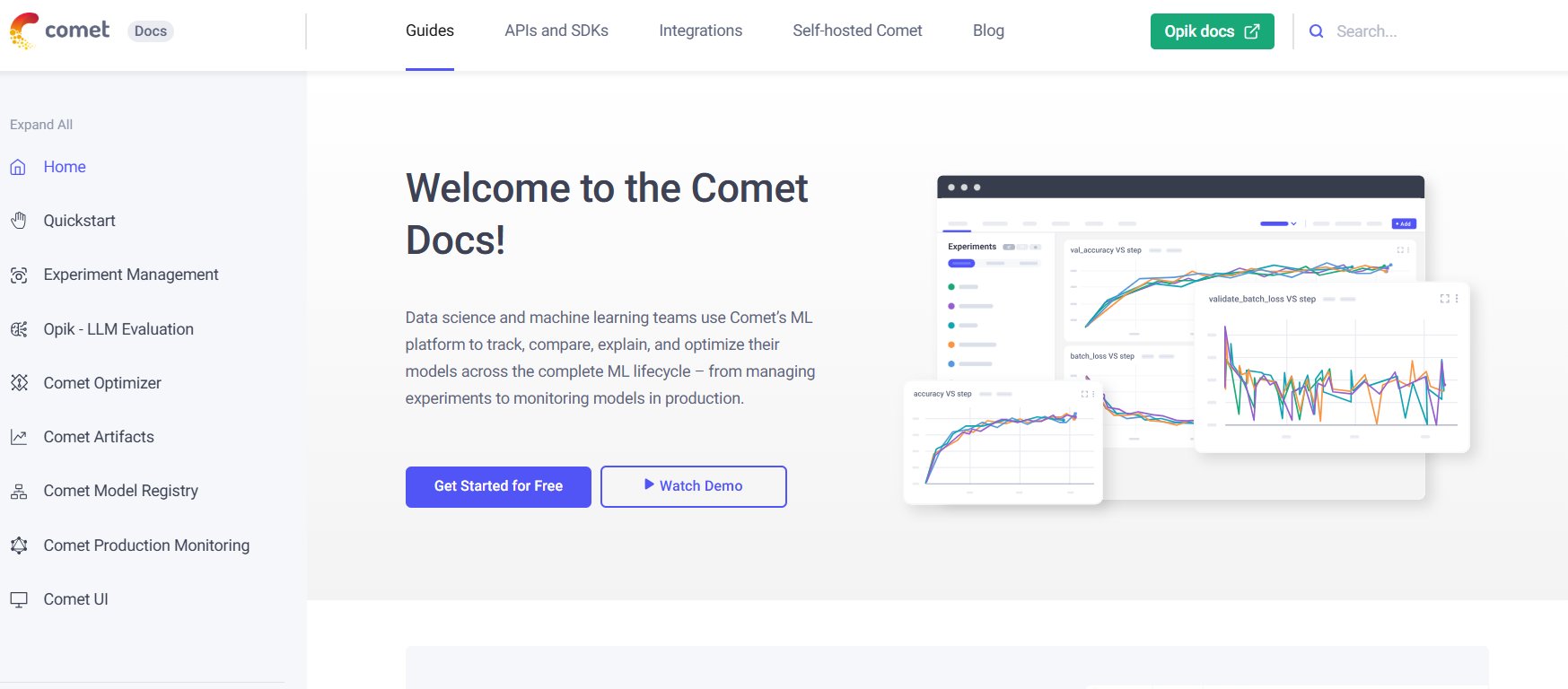
CometDocs is a basic and affordable online converter that does a good job with low-quality scans and retains the original format of documents.
- Best for: Archiving old documents
- Pricing: No data
Why it stands out:
It can handle more than 50 output formats for variety in formats, and is a killer tool for converting harmful PDF files to safe, editable documents, keeping the layout perfect as they were.
9. PDF.ai – Best Chat-Based Extraction
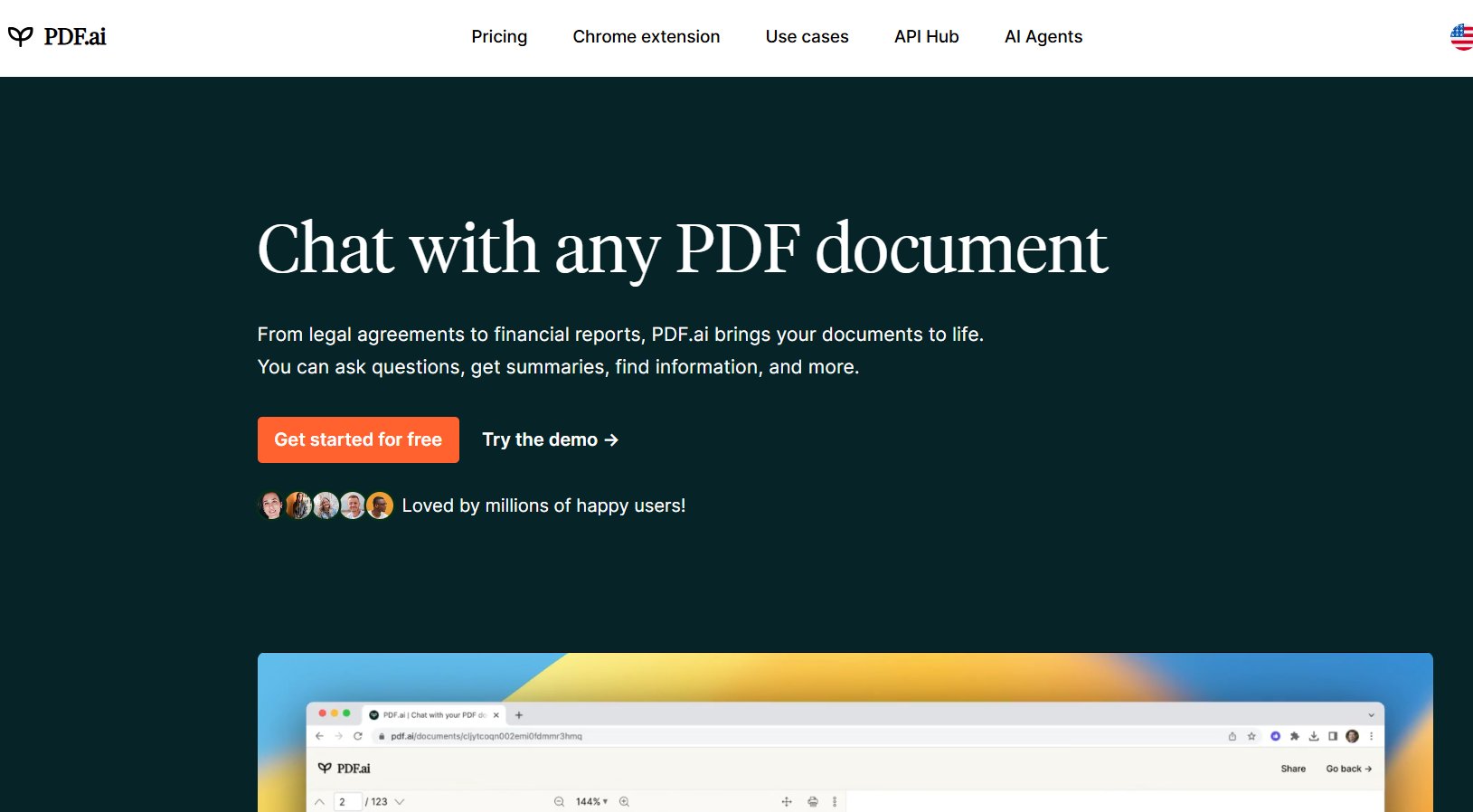
PDF.ai applies that conversational ability to PDF data — just upload a file and chat with it as you would ChatGPT.
- Best for: Quick queries without exporting
- Pricing: Free (Pro: $10/month)
Why it stands out:
It can answer questions, refine lengthy reports, and even provide a reference to a certain page. A good time-saver for academics, journalists, and covers both students who want ‘a quick take’ without the work of reading pages.
10. Klippa – Best for ID Cards & Forms
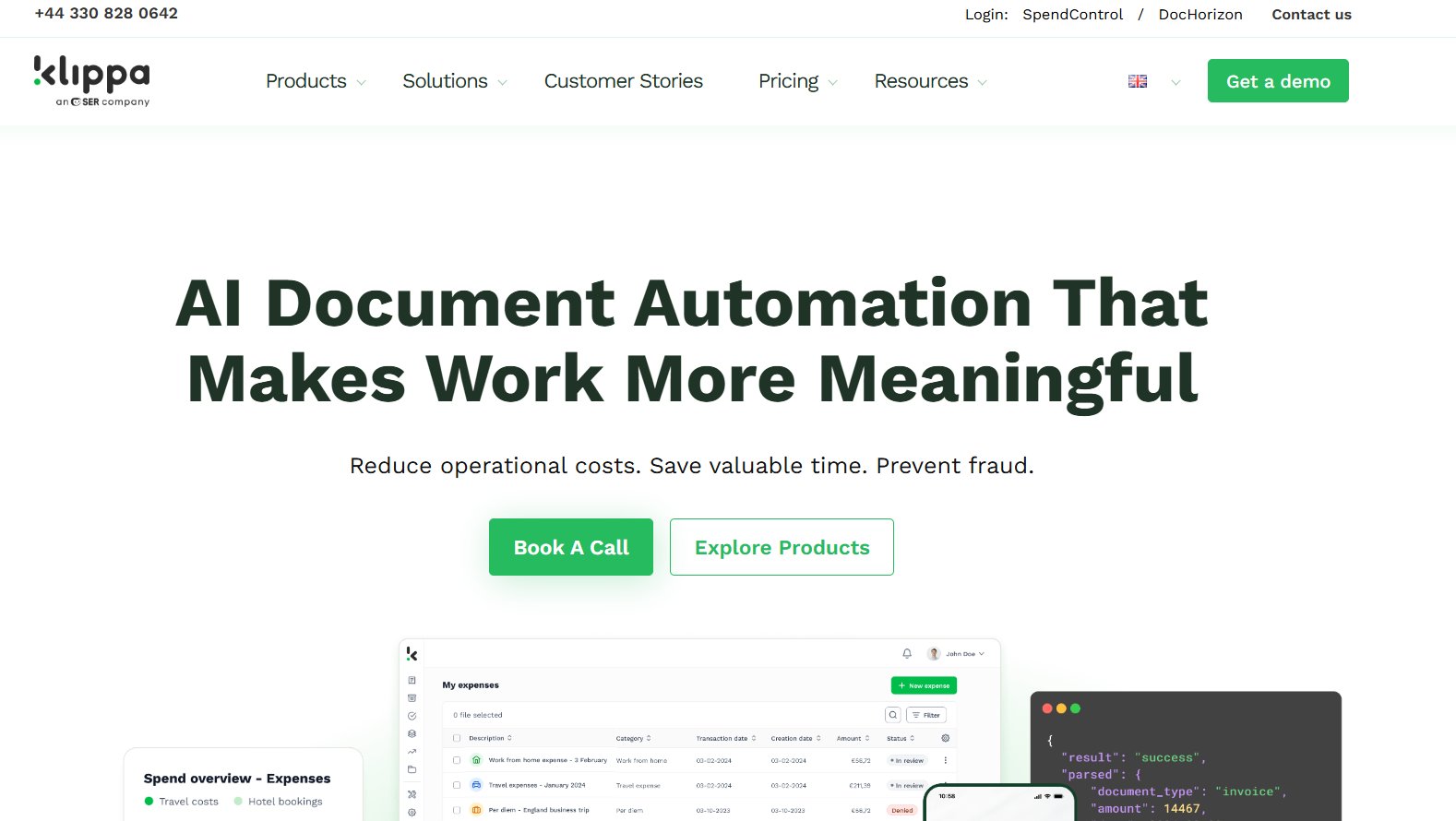
Klippa is an AI-driven document scanner with specialization in extracting sensitive personal details from ID cards, passports, and certificates.
- Best for: HR & KYC compliance
- Pricing: Custom (Demo available)
Why it stands out:
It’s also GDPR/CCPA compliant, automatically redacts sensitive information, and is developed for government-issued documents, so great for HR onboarding or KYC processes in fintech and banking.
People Also Ask: FAQs
1. Which free tool extracts tables from PDFs best?
Tabula (open-source) and PDF.ai (chat-based) are great for basic tables.
2. Can AI extract data from scanned invoices?
Yes- Rossum(99% accuracy) and Nanonets(self-learning) are specialized in invoices.
3. How do you convert a PDF to Excel automatically?
Use Adobe Acrobat’s Export PDF or Docparser’s scheduled workflows.
4. Is there an AI that reads handwritten PDF forms?
Adobe Acrobat Pro + Klippa handle handwritten fields best.
5. Which tool is GDPR compliant?
Klippa and Rossum offer data redaction & EU compliance.
6. Can I extract data from 1000+ PDFs at once?
PDFelement (batch) and Nanonets (API) process large volumes.
7. How accurate is AI for financial PDFs?
You can use best-in-class tools (Rossum, Nanonets) to reach 98-99% on clean documents.
8. Is there a tool that works inside Gmail?
Parseur auto-extracts PDF data from email attachments.
9. Can AI extract signatures from PDFs?
Yes—Klippa detects & redacts signatures for security.
10. What’s the fastest PDF data extractor?
PDF.ai (instant queries) and Tabula (lightweight) are speed leaders.
Conclusion
Having tested all those tools on your behalf, Adobe Acrobat Pro won out for all-around PDF data extraction, while PDFelement is the budget-oriented choice for precision.
For tables or PDFs, free users may want to check out Tabula.ai for queries. Organizations automate invoice processing and self-learning with Rossum and Nanonets.
As always, test-eye data… no tool is infallible. For the best results, preprocess scans in Adobe Scan before extracting information. We will revisit these recommendations quarterly as AI advances.

